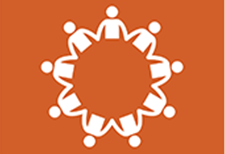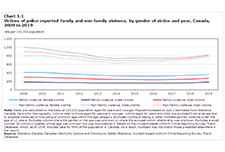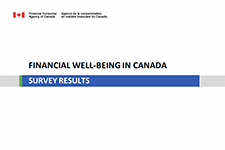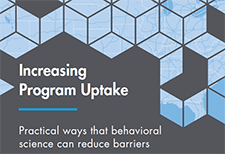Discover financial empowerment resources
Discover financial empowerment resources
This collection of financial empowerment tools and resources is intended to support both Indigenous and non-Indigenous organizations working to build financial wellness in First Nation communities. It was created as part of the Financial Wellness in First Nations project (2021-2023) where...

Financial empowerment (FE) is an approach to poverty reduction that focuses on improving the financial security of people living on low income. Evidence shows that embedding FE interventions into municipal welfare, employment, housing, shelter and health services can significantly boost service...

Family violence in Canada: A statistical profile is an annual report produced by the Canadian Centre for Justice and Community Safety Statistics at Statistics Canada as part of the Federal Family Violence Initiative. Since 1998, this report has provided data on the nature and extent of family...

Financial well-being is the extent to which you can comfortably meet all of your current financial commitments and needs while also having the financial resilience to continue doing so in the future. But it is not only about income. It is also about having control over your finances, being able to...

The Consumer Financial Protection Bureau’s continuing effort to encourage saving at tax time is now part of a larger Bureau initiative to support people in building liquid savings. The new initiative is called Start Small, Save Up. The vision for Start Small, Save Up is to increase people’s...

The Education Policy Research Initiative (EPRI), a national research organization based at the University of Ottawa, has used administrative student data held by 14 post-secondary education (PSE) institutions in four different regions of the country linked to tax files at Statistics Canada in order...
This is an infographic summarizing the employment earnings of post-secondary graduates from different educational programs, 1 year and 5 years after...
By 2003, the savings and asset building field had achieved critical research and policy successes. However, some challenges it faced were the lack of a substantial presence of organizations of color in the field and the absence of experts of color at decision-making tables. Over the course of 11...
There is concern that the increasing number of alternative financial services in communities across the US is risking individuals' financial health by increasing their use of these highcost services. To address this concern, this study used restricted-access, zip code data from nationally...
The effects of different types of debt can vary widely: some debt is considered productive by advancing young adult households' financial health while other debt can be unproductive, pushing their financial health out of reach. A savings account may help young adult households reduce their reliance...
The CPRI is a joint initiative of The City of Calgary and United Way of Calgary and Area to develop a long-term community-based strategy to significantly reduce poverty and vulnerability in Calgary in the short term, and end it in the long term. This is the final report of the CPRI, Volume 1 and...
In June 2005, Social and Enterprise Development Innovations (SEDI), the Policy Research Initiative (PRI), and the Financial Consumer Agency of Canada (FCAC) organized Canadians and Their Money: A National Symposium on Financial Capability. The conference stemmed from an initial examination by SEDI...
No explicit theory or framework consistently describes the goals of social policy or how social policies actually work. By a framework, we mean a consistent way of describing individuals in their relationship to society and its institutions, including how policies affect those relationships, and...
The Policy Research Initiative of the federal government organized an extremely interesting and well-attended conference on “Asset-Based Social Policies” on December 8-9, 2003. There is quite a buzz around this broad theme in Canadian social policy circles these days, and some community-level...
We still have limited understanding of many issues regarding asset–building policies. What is the role of asset–based approaches in addressing poverty and social exclusion? What does the evidence tell us regarding the advantages and limitations of asset–based policies? What are the...
A government designs a great service or program to support its residents. Although many people qualify, the program receives just a few applications. How can we increase uptake? This is a common question the Behavioral Insights Team (BIT) has helped governments answer across many policy...

